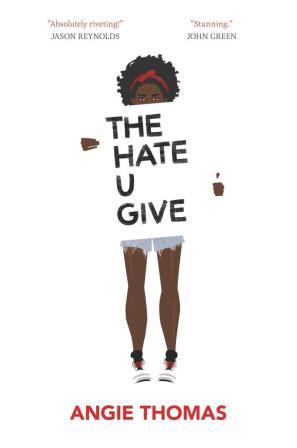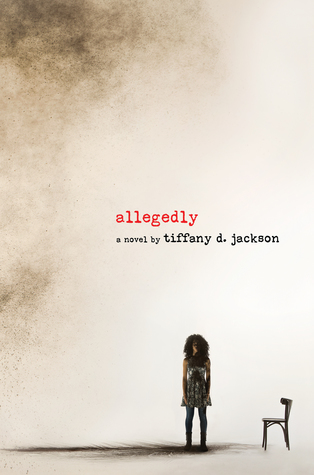~from Katie Haggstrom
Even as college students, it’s still fun to read young adult novels. We’ve found some classic and some new must-read young adult novels, all featuring African American authors.
 The Hate U Give by Angie Thomas. This book made the New York Times young adult best seller list. As Thomas’ first novel, The Atlantic describes it as an “incisive and engrossing perspective of the life of a black teenage girl as Starr’s two worlds converge over questions of police brutality, justice, and activism.”
The Hate U Give by Angie Thomas. This book made the New York Times young adult best seller list. As Thomas’ first novel, The Atlantic describes it as an “incisive and engrossing perspective of the life of a black teenage girl as Starr’s two worlds converge over questions of police brutality, justice, and activism.”
Dear Martin by Nic Stone. This book has joined the ranks of Thomas’ debut novel. As Kirkus Reviews explains, this novel follows “seventeen-year-old black high school senior Justyce McAllister, a full-scholarship student at the virtually all-white Braselton Prep.” As the review explains, the “novel intentionally leaves more questions than it attempts to answer, [but] there are layers that still remain between the lines.”
Black Boy White School by Brian F. Walker. After you’ve read Stone’s novel, Walker’s novel deals with a similar theme of a black boy arriving at an all-white school. As Publishers Weekly explains, Walker’s “exploration of the effect of race and class on identity carries the story far.” 
Calling my Name by Liara Tamani. This is another debut book by an African American author. Tamani writes a coming-of-age book about Taja Brown and “the universal struggles of growing up, battling family expectations, discovering a sense of self, and finding a unique voice and purpose.”
Feathers by Jacqueline Woodson. Just this year, Woodson was named the National Ambassador for Young People’s Literature by the Library of Congress. This book was published in 2010, but many of the issues it deals with are still relevant today. Feathers follows a sixth grader, named Frannie, who grew up in the 1970s. Frannie is caught up in the chaos of a new student who becomes the only white boy in her entire school.
Bud, Not Buddy by Christopher Paul Curtis. This is a classic novel, published in 1999, and one you might have read in middle school. Curtis’ novel won the Newbery Medal and, as Publisher’s Weekly explains, the book the “travails and adventures of a 10-year-old African-American orphan in Depression-era Michigan.”
Slice of Cherry by Dia Reeves. Reeves created an interesting thriller with this book. Two sisters, Kit and Fancy Cordelle, become fascinated with the idea of murder. “What starts as fascination with slicing open and stitching up quickly spirals into a gratifying murder spree. Of course, the sisters aren’t killing just anyone, only the people who truly deserve it.”
 Allegedly by Tiffany D. Jackson. This is another murder thriller, so it seems fitting to include it alongside Reeves’ book. The protagonist, Mary B. Addison, has killed a baby, “allegedly.” As the Kirkus Reviews explains, Jackson’s book becomes another “indictment of the penal system’s decimating power beyond its bars and, more subtly and refreshingly, a pro-reproductive-justice novel.”
Allegedly by Tiffany D. Jackson. This is another murder thriller, so it seems fitting to include it alongside Reeves’ book. The protagonist, Mary B. Addison, has killed a baby, “allegedly.” As the Kirkus Reviews explains, Jackson’s book becomes another “indictment of the penal system’s decimating power beyond its bars and, more subtly and refreshingly, a pro-reproductive-justice novel.”
Monster by Walter Dean Myers. This 2004 book is another classic and worth reading if you haven’t read it yet. This New York Times bestselling book follows a character named Steve Harmon, a “boy in a juvenile detention and on trial.” Kirkus Reviews says “the formatting of this taut and moving drama forcefully regulates the pacing.” Ultimately, Myers’ book shows that “the road from innocence to trouble is comprised of small, almost invisible steps, each involving an experience in which a ‘positive moral decision’ was not made.”
Go Tell it on the Mountain by James Baldwin. While Baldwin is rarely clumped into the young adult category, this book follows a 14-year-old and his “discovery of the terms of his identity as the stepson of the minister of a storefront Pentecostal church in Harlem one Saturday in March of 1935.” As The Guardian explains, this book was “moulded by Baldwin’s painful relationship with his stepfather, David, a disciplinarian preacher from New Orleans.” On the one hand, this book critiques the Pentecostal church, but on the other hand, it is “tinged too with nostalgia and wonder.”